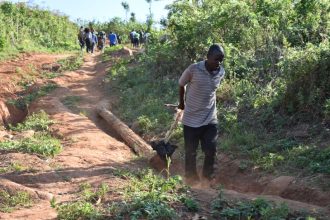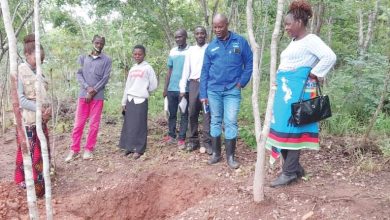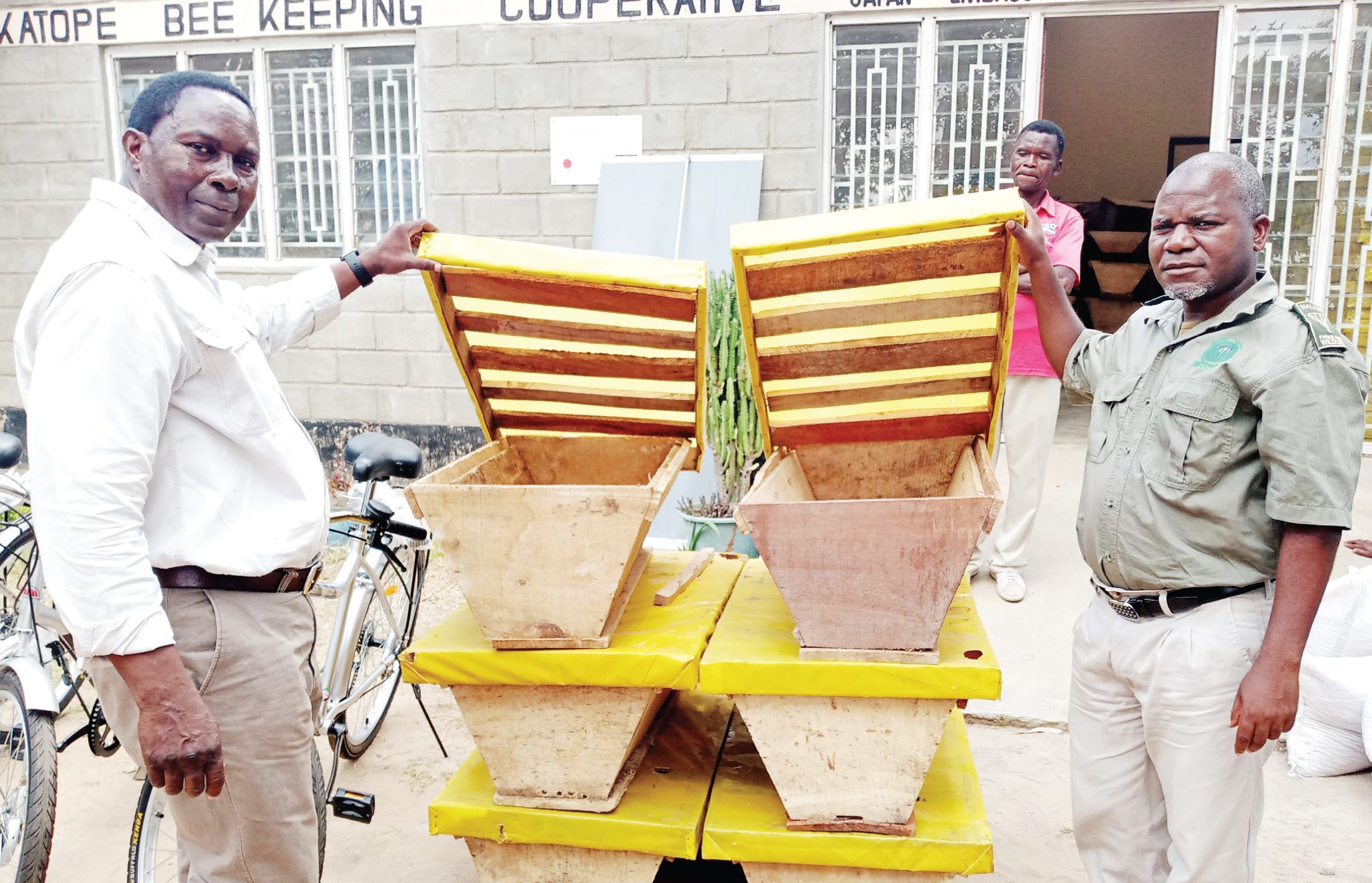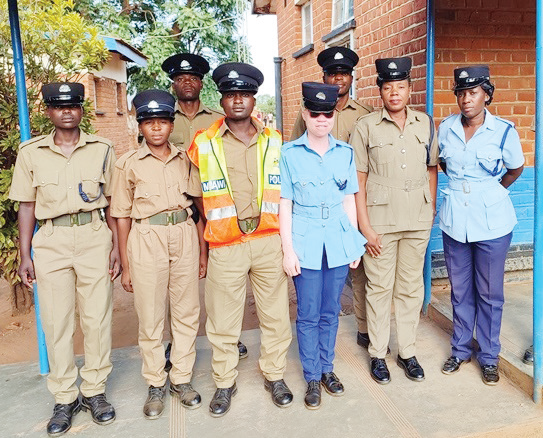Turning to familiar foe for water
The power of sunlight goes deeper to tap water for populations that rued abundant sunny days when taps run dry, our Staff Writer JAMES CHAVULA writes.
The dwindling of surface-water sources fuels a rush for sources hidden underneath the drylands.

The race for groundwater is underway in Ntcheu and Balaka, where thousands endured dry taps when the highly silted Mpira Dam run dry due to drought and massive deforestation in its catchment.
When the taps could not produce water for weeks, residents of the dry town rued the sweltering sunshine that left rivers desicated and crops scorched.
In a twist, water boards are turning to the power of sunlight to pump water from the ground to people who need it most.
In the middle of a freshly tilled maize fields in Chaole, Ntcheu, 200 solar panels are converting sunlight to electricity for pumping water from the ground to Central Region Water Board (CRWB) booster tank atop Chaole, almost four kilometers up the hill.
The 26-killowatt solar system runs two boreholes, one yielding 22 litres a second and another 12 litres. The pumps can lift about 100 000 litres per hour, but the reservoir, from where water flows by gravity to Ntcheu town, takes no more than 75 000 litres.
“When the higher-yielding borehole pumps for 42 minutes, the tank will be full. It’s like we have more food than CRWB plate can take,” says Foundation for Irrigation and Sustainable Development (Fisd) site engineer Raymond Chitete.
Why solar is handy
The solar-powered water plant financed by the World Bank is part of the emergency response to the water scarcity caused by a three years of prolonged dry spells.
“The project started in 2016, when most water boards couldn’t meet the demand. We know drought will happen, so we approached government to make the water system resilient and sustainable,” says Francis Nkoka, senior disaster risk management specialist at the World Bank.
Harnessing the power of sunlight to provide water to populations desperate for safe water illustrates how solar power lessens the hardship faced by water stressed communities.
In 2015, world leaders adopted 17 Sustainable Development Goals (SDGs) to end poverty by 2030. Goal number six calls for transformative innovations and bold action to ensure everyone uses safe water and sanitation.
People hit hard by the drying of Mpira Dam recount the suffering Ntcheu residents endured when the taps stopped producing water.
Village head Siliya recalls: “We spent weeks without water. Every day, pupils were late for school and some stopped attending classes because they had to assist their parents fetching water from a faraway stream which was shrinking.
“Men and women woke up around midnight to queue for water in lines that started forming around 11pm. Lucky are those who had bicycles because they could carry three or more jerry cans at once.”
At that time, families came up with quirky strategies to maintain body hygiene.
“Then, families came up with timetables showing who was supposed to take a bath on a particular day. Considerate men usually gave way to women, who cannot take a whole day without bathing,” says Maurine Mande.
The productive use of solar energy at Chaole empowers CRWB to consign the breakdown in water provision and sanitation to the past.
“It is interesting that the high-yielding boreholes are connected to both solar and hydro power. When Escom [Electricity Supply Corporation of Malawi] is overwhelmed or experiences a blackout, solar energy will be handy. After all, the area experiences long, sunny days which translates to a high potential for solar energy,” says John Kumwenda, director of water supply services in the Ministry of Agriculture, Irrigation and Water Development.
The hydropower grid has become erratic due to prolonged drought, massive siltation, rapid deforestation and low investment in diversifying energy sources. To make matters worse, nearly all turbines generating the country’s electricity are located on the Shire River. The sole outlet of Lake Malawi has suffered the worst impacts of climate change and loss of forest cover.
“The country has put all its eggs in one basket. Unfortunately, hydropower is no longer reliable because rivers, including the Shire, are dying due to impacts of climate change and environmental degradation,” says energy activist Edgar Bayani, executive director at Community Energy Malawi.
As water boards struggle to sustain water supply due to frequent and lengthy power blackouts, solar energy is no longer just an alternative, but part of the solution.
Says Chitete: “As electricity supply remains unreliable, people complain about intermittent water supply. But they don’t have to. Solar gives us the power to pump water all day regardless of blackouts. It is also cheaper than pumping water using hydropower supplied by Escom.
“When CRWB switched to a plant we installed in Madisi, Dowa, they discovered it was almost 44 percent cheaper than Escom bills.
In this way, the water board can pump water for the people while the sun shines.
“Malawi has abundant sunshine. Every day, we experience many hours of sunlight. We have free renewable energy we don’t use. We use solar energy to pump water during the day and switch to Escom at night, when the cost and demand of grid power is low. In this way, we are reducing pressure on the grid, meaning Escom will supply the electricity we could have used all day to other areas where it is needed,” he explains.
The water project in the outskirts of Ntcheu Boma automatically combines solar and grid power depending on the output of the glistening photovoltaic panels. When solar power drops, it increases the inflows from Escom power lines.
Ending poverty
Fisd has drilled eight high-yielding boreholes in Ntcheu, Balaka, Mwanza, Neno, Mwanza, Mulanje and Chikwawa which are mostly dry. However, the drilling has resulted into yields of 10 to 28 litres per second. But World Bank engaged them to identify spots with the potential to produce at least five litres a second.
“This should open people’s minds that we might be having a lot of groundwater we can use to beat water crises in places like Ntcheu and Balaka. We can also use this water to irrigate crops instead of farming too close to rivers, which increases siltation,” says Frank Mwenechanya, managing director of Fisd.
Mwenechanya and his three peers co-founded the irrigation company to beat unemployment and low investments in the water sector. The water engineers have made solar energy part of their life-changing solutions.
“If we harness solar energy, we can change the way we grow crops, supply water and do business. We can use this free, renewable energy to overcome hunger and poverty. The initial cost of solar energy may be expensive, but it is cheaper to operate,” he says.





